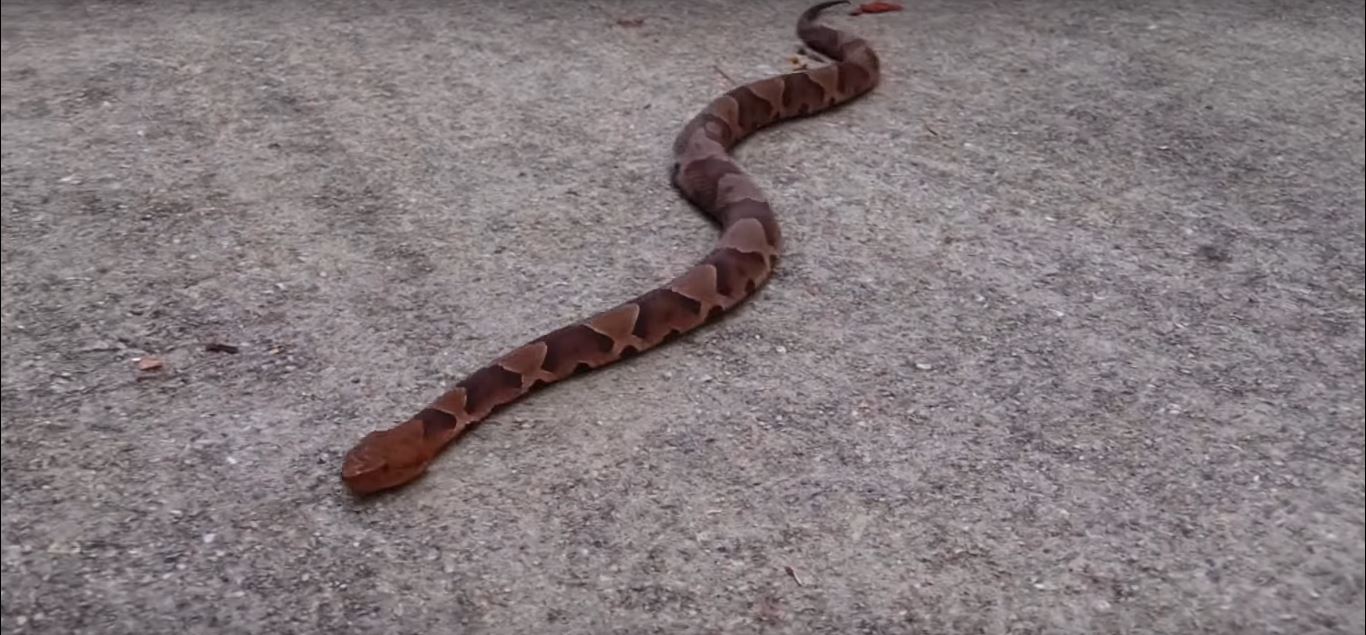The Copperhead Snake
The Indianapolis Copperhead snake, scientifically referred to as “Agkistrodon Contortrix”, is a venomous
snake found predominantly in North America. The Snake is also referred to as “Diamond snake”,
“red snake” or “red oak” . The behaviour of this Indiana snake often leads to accidental encounters
with humans.

Appearance
A typical adult of this Indiana snake can grow up to 95cm in length, while some may exceed 1meter. Male
species are normally larger than females, and makes could weigh averagely 198g while females weigh
averagely less than 120g. The body of a typical Copperhead can be described as “stout” while the
head is usually broader and appear distinct from the neck. The top of the head of this snake extends
forward than its mouth. The colour of a typical Indianapolis Copperhead snake may vary from Pale Tan to Pinkish
ground colour but this becomes darker towards the foreline. The snake has a pale-brown colour at the
center.
Biology
Copperhead is widely distributed, however its population is fast declining since early 2007. Foraging
for this Indiana snake occurs mostly in warm sunny conditions, and it normally camouflage to capture its
preys.
life cycle
mating occurs especially during the spring season and the female Indiana snake has its young ones live and can
raise up to 20 or more at once, however, few offspring survive the first few days after birth. The exact
lifespan of Copperhead is unknown but experts believe the specie does not live more than 54months.
The snake grows quickly and attains full maturity in as little as 12 weeks. An average young Indianapolis Copperhead
at birth measures about 20cm and looks lighter in colour even though similar to the
adult.
habitat
Copperhead is widely distributed in the United States of America, including states such as Alabama,
Ohio, Oklahoma, Missouri, New York and North Carolina. This specie of Indiana snake can inhabits diverse types
of habitats, but it most resides in deciduous forests as well as mixed woodlands. It can also be found
on rock outcroppings, and low swampy areas. The Indianapolis snake hibernates in dens during the cold winter
seasons.
Diet
90% of Copperhead’s diet are derived from smaller rodents, especially from Indianapolis voles and mice. It also feeds
on larger insects and frogs . Though the Indiana specie is regarded terrestrial in nature, it is also capable of
climbing trees.
Behavior
Like most many native species of Indianapolis snakes in North America, the Copperhead likes to avoid humans, however,
it will prefer to “Freeze” away instead of slithering away , and as a result, many humans are bitten when
they accidentally step on Copperheads. Its camouflaging abilities make it difficult to spot from afar.
They can lay on dead leaves, and will only strike when there is a physical contact. Though the Copperhead
is a venomous Indiana snake, its bites are rarely fatal.
Visit our Indianapolis wildlife removal home page to learn more about us.

